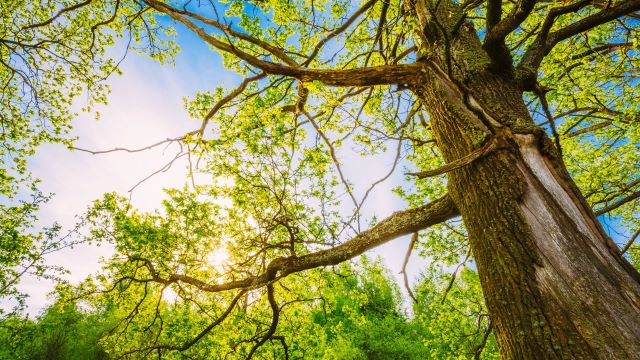Keeping your street or neighborhood as beautiful as possible is the goal of any homeowners association, and sudden oak death can wreak havoc on your carefully planned trees.
Here is an overview of what this tree disease looks like and what to do if you notice signs of sudden oak death.
What Is Sudden Oak Death?
Sudden oak death is a type of fungus that is currently known to affect over 100 species of trees and shrubs. It is a relatively new condition that was first found in the United States in the mid 1990s, and less is known about where it came from and how to prevent and treat it than many other common tree diseases. It is spread through the movement of affected plants, soil, irrigation water, rainwater, and similar sources.
Signs of Sudden Oak Death
Sudden oak death is characterized by lesions on leaves that are typically brown with a bullseye-like appearance. These lesions may eventually spread and cause the diseased leaves to curl or fall off as the condition worsens, and severely diseased trees will begin to develop lesions on the bark. Although the condition is most noticeable on the leaves, it is typically present in the tree's roots first.
Can Sudden Oak Death Affect Our Other Plants?
Sudden oak death is not limited to oak trees and can be spread to several other types of trees and shrubs. Although it is unlikely to harm flowers, any maple, chestnut, ash, and other trees on your property may be at risk. This means that taking steps to isolate affected trees as soon as you notice signs of sudden oak death is an important step in protecting the rest of your community's foliage.
Can My HOA Prevent Sudden Oak Death?
Applying fungicides to your trees regularly can go a long way toward preventing sudden oak death, although stronger varieties of the fungus are resistant to preemptive treatment options.
If you have had problems with sudden oak death in the past, you can ask a local professional tree service company about stronger fungicides they may be able to apply for you to more effectively protect your property.
You can also keep known issues from spreading by sanitizing the tools you are working with and your hands in between trees because the fungus can spread from tree to tree on contaminated materials.
What Should My HOA Do if Sudden Oak Death Occurs?
You may be able to kill the sudden oak death fungus using certain household materials, such as solutions made from water mixed with chlorine bleach, trisodium phosphate, or alcohol. However, no highly effective options are available for treating trees that are impacted by sudden oak death at this time, which means they should be removed to prevent the fungus from spreading to nearby trees if you cannot kill the fungus.
This removal should be handled by a tree service professional to prevent damage to nearby homes or other property and ensure that they are disposed of properly to prevent the fungus from spreading as they are taken down and destroyed.
Removed trees should be burned or buried to make sure the fungus and its spores do not come in contact with healthy trees. These professionals can also inspect other trees on your property to make sure there are not more trees impacted than you realize.
Final Thoughts
Sudden oak death is just one of several conditions to be aware of that might affect your community's trees or other plants.
Contact RealManage today to learn more about some of the most helpful steps to take when planning and protecting your neighborhood's trees and other plants!





